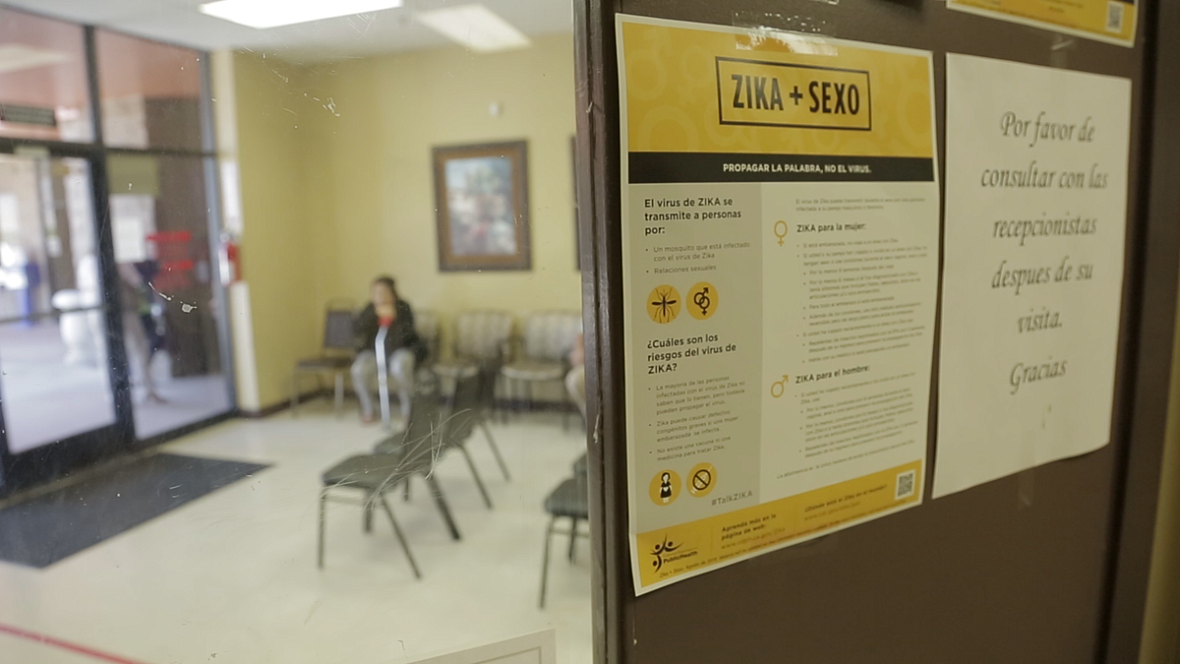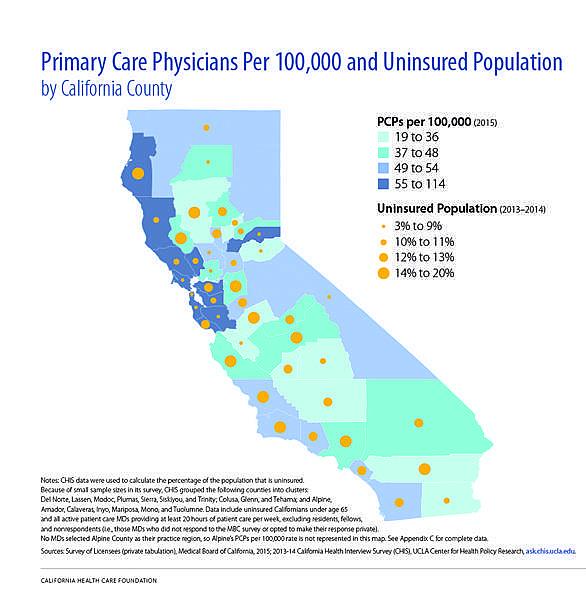Doctor Shortage: How the Inland Empire Came To Have So Few Physicians
This story was produced for the USC Center for Health Journalism’s California Fellowship.
Other stories in this series include:
Doctor Shortage: Lack of Behavioral Health Professionals Takes Toll On I.E. Residents' Mental Health
Doctor Shortage: UCR Programs Aim To Keep Aspiring Doctors In The Inland Empire
Doctor Shortage: Two New I.E. Healthcare Schools Work To Address Primary Care Shortage
Doctor Shortage: UCLA Program Trains Immigrant Physicians To Serve In The I.E.

Patients wait for care in a Coachella Valley waiting room. Credit: Mathew Ornelas / KVCR
KVCR is taking an in-depth look into the physician shortage plaguing California – and it’s especially bad in the Inland Empire. KVCR’s Benjamin Purper has part one of our five-part series on the doctor shortage.
On Christmas Eve in 1899, the Santa Fe train was coming into town. It crossed the hills and reached the Inland Empire when suddenly, it derailed.
Five people were killed, and many more injured.
“The bad news was, the nearest hospital was in Los Angeles,” says Inland Empire historian Joe Blackstock. “And then you have a situation where the train was wrecked.”
Injured passengers were now stuck in Pomona, 30 miles away from Los Angeles. And the incident showed the drastic lack of healthcare services in the burgeoning Inland Empire. Locals there took notice.
“So, people in for instance Pomona decided well, wait a minute, we need to have something here. Maybe one little doctor, but when you have an emergency or you have situations, we need to have a hospital.”
“Pomona's hospital, Pomona Valley Hospital Medical Center, was slowly but surely created,” Blackstock says.
Blackstock says the 1899 train wreck was the beginning of a pattern: the region’s healthcare needs have always outstripped the supply.
“The need has been dealt with on a reactive basis as opposed to looking ahead. We have a train wreck, and then we decide we need a hospital.”
Today, healthcare in the Inland Empire is facing another train wreck.
According to a recent report out of UC San Francisco, the entire state will likely face a severe shortage of primary care clinicians in the next 15 years. That makes it one of California’s biggest public health problems – and one that will hit the Inland Empire especially hard.
The region has the lowest physician to resident ratio in all of California. In 2017, there were only 39 physicians per 100,000 residents, far below the recommended 70 doctors per 100,000 people.
Credit: California Health Care Foundation
“It’s a real struggle for our area,” says John Husing, an Inland Empire economist. According to Husing, there are three main factors behind the shortage. The first is the Affordable Care Act.
In 2012 there were about 750,000 people in the Inland Empire without health insurance – in 2016, that number dropped to about 330,000.
“It went from 28.8% of the population to 12.4% of the population,” Husing says. “Now that increases the demand for healthcare and therefore for doctors in this area.”
Another factor driving the shortage is the lure of Los Angeles and Orange counties. Doctors head to the coast to make a higher salary than they can in the Inland Empire. That makes training local doctors and having them stay in this region pretty difficult.
“It's a tough road to hoe, because it takes a lot of training and docs can make more on the coast than they can make here. So it's a struggle for our area.”
And then, there’s the problem of retirement.
“The last [factor] would be the aging of the population with the Baby Boomers getting into their 60's.”
The shortage of doctors in the Inland Empire has all kinds of consequences – long wait times, a lack of certain specialties in this area, and for some, an inability to access healthcare at all.
For Karen Olson, it meant leaving San Bernardino County to find the care she needed.
When Olson was diagnosed with uterine cancer, she decided to seek specialty care at Los Angeles-based City of Hope rather than a local treatment center.
“My doctor that diagnosed me was a local doctor in Redlands, and I've had very good care there, but they don't treat cancer,” Olson says. “I really wanted to go to somebody who only treats cancer. They research it, they treat it, that's all they do.”
That meant daily drives that could take over three hours total.
Olson says she was grateful to be able to do it. Most people in the area couldn’t.
“It's grueling, the drive does get grueling and not everyone has that option to do it. First of all because of the insurance and transportation costs and time, you know, I feel lucky that I could quit working and devote 8 months to this process. And so I feel fortunate that I can do that drive, but someplace closer like that would definitely, if I wanted to keep working and if I had to keep working, I could've had that option.”
Olson has had her last radiation sessions and is now in remission. But she still has to drive to Los Angeles occasionally for check-ups.
For the rest of our series on the doctor shortage, we’ll hear about its effects on resident’s lives and some programs and people who are addressing it.
[This story was originally published by KVCR News.]

